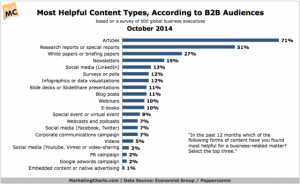A step-by-step workshop approach to defining the key ‘entry points’ where your product or service can solve customers’ pressing pains.

Understanding the “entry points” where your ideal customers first experience the acute pains your product or service can solve is critical for marketing success. An entry point is that pivotal moment when a prospective customer feels intense pain from a problem that your solution could instantly alleviate — if only they were aware it existed.
Understanding ICP entry points
The ideal customer profile (ICP) entry point occurs when your potential customer is experiencing a problem, not when engaging with your sales or marketing efforts. They’re not actively considering your product or seeking to make a purchase; instead, they’re feeling the pain of their current situation.
Your customer likely experiences this pain frequently, perhaps continuously. For example, they might rely on spreadsheets for dynamic tasks, while you offer tools to automate and add intelligence to these processes. At this moment, when they’re updating the tedious spreadsheet by gathering information from emails and team members to manually produce revised plans and graphs, your solution needs to come to mind. So, why don’t you come to mind?
The workshop format for defining entry points
Creating your entry point map can be an enjoyable team-building activity that yields impactful results. Start by gathering key stakeholders internally. This group should encompass members from various departments, including marketing, particularly product marketing, product management, customer success, implementation services, sales management and enablement, sales engineering and a few top-performing sales representatives. Each person should possess both an instinctive and organized grasp of your ideal customers.
Step 1: Define your ICP and buyer persona
This is its own detailed process and must be completed before entry points. Here are some MarTech articles to help you with the process:
- How to develop a winning B2B ideal customer profile
- How to make your ‘ideal customer profile’ more ideal
Step 2: Articulate triggers
Bring the whole group together and ask each individual to write down exactly seven triggers and why these cause pain to the customer. Triggers can be big events (i.e., regulations, competitive pressures, restructures, new processes, etc.) or smaller, personal activities (i.e., updating spreadsheets, tracking processes or data, manual reporting, calling customers, etc.). These triggers should be the source of pain that your customer is feeling and that your solution can help remedy.
At the end, each person has two minutes to present their seven triggers. It’s a great time to put sticky notes on the whiteboard. Interrogate each response and ask, “Is this really a thing?” Be direct and swift, and keep the conversation honest. By the fourth person, these should begin to be redundant. Prioritize the list to the top three. Divide everyone into three groups — one for each of the selected triggers.
Step 3: Journey mapping
For the next 90 minutes, each group focuses on their assigned trigger and articulates the customer journey in great detail. This is a great time to “call a friend” — perhaps a customer or a customer success rep to get a more detailed view of the customer’s real-life experience.
In this step, account for every bit of the entry point journey and all the meta information about the journey. For example:
- If the customer is using spreadsheets, why? Why are the spreadsheets so necessary?
- How does their job depend on the spreadsheet? Did they inherit or create the process?
- How difficult is it to change this process? How do they measure and report results, progress and pacing?
- What processes across the business are dependent on this legacy process?
Each team will take 15-20 minutes to present, defend and challenge their journey to the rest of the group. This step is important because it presents new thinking across all three teams to enhance the next step.
Step 4: Entry point mapping
The journey mapping step began with triggers. Along those triggers, each team likely introduced vulnerable moments when your prospective customer would have eagerly considered your solution. These are the candidate entry points.
For the next hour, each team regroups and repeats a similar sticky notes exercise, with each team member selecting seven (no more or less) candidate entry points and presenting them within their teams. Select three.
In these three, the team goes deep into the customer’s signals (searching for certain information, reaching out to colleagues, reading books/content/industry materials), articulating exactly what and when this happens for each of the three entry points.
Each team again presents to the whole group for 15-20 minutes. The whole group must interrogate each presentation aggressively and will likely reduce the entry points from nine (three per group) to perhaps four or five.
Step 5: Entry point strategy and messaging
Each team regroups one last time to define a specific playbook for their remaining entry points. This playbook will encompass the signals, conditions and circumstances when each trigger opens an entry point.
With that information, the team will identify the key messaging, claims, and proof required to engage the customer’s interest, which will be used by sales and marketing. The team will highlight key content for each stage of the marketing and sales process that keeps the customer engaged and moving forward.
Finally, this process almost always results in a short list of product requirements that align with the entry points. These should be documented with a charter to bring the capabilities into the product roadmap.
Step 6: Test it with customers
There is so much nuance in the buying process that we have difficulty understanding — customer feedback will improve everything about your entry point strategy.
Your finished product will need continued optimization and improvement, but this will likely have a strong shelf life of three to five years and will help you and your prospective buyers align on your solution quickly.
The post How to turn your ideal customer’s pain points into entry points appeared first on MarTech.
(15)
Report Post




